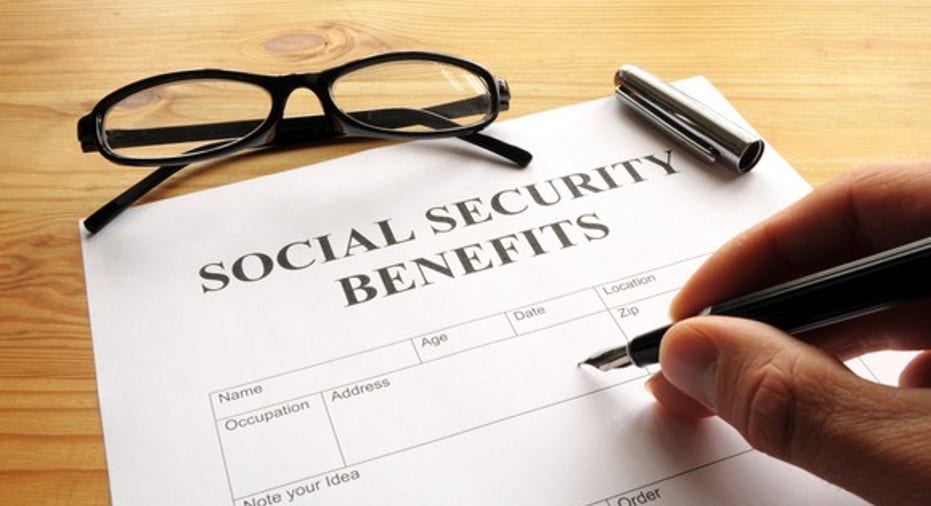Can Social Security Be Garnished?

If you think Social Security enjoys protection from garnishment -- that is, a court order that freezes bank account assets -- you're partly right.
Under section 207 of the Social Security Act, Social Security can be garnished to pay child support or alimony, civil penalties, overdue federal taxes, and other non-paid debts due to federal agencies, including student loans. Legal judgments against you can also trigger garnishment, but the government provides certain protections if your benefits are direct deposited into a bank account.
What happens when Social Security is garnished by the U.S. government
According to the Social Security Administration's official website, your benefits can be garnished under these circumstances:
- For the enforcement of child support and alimony obligations
- For satisfying civil penalties under the Victim Restitution Act
- When a taxpayer is served with a "Notice to Levy" to collect overdue federal taxes
- Through a 15%-per-month levy on each Social Security benefit payment to collect overdue federal taxes, via the "Federal Payment Levy Program"
- Through withholding Social Security benefits to pay another federal agency for a non-tax debt (e.g., overdue or delinquent student loans)
It's important to understand that in the process of garnishment, a bank is obeying a government or court order and has to follow a federally mandated process. If any of the above instances listed above apply, a financial institution will essentially proceed with garnishment. Note that a state agency enforcing child support will enjoy the same level of authority as the federal government, and a bank will implement its order.
What happens when Social Security is garnished by a third party
If a third-party creditor wins a court judgment against you, it's true that your Social Security can be garnished. However, your bank will be required by the government to follow a slightly different procedure.
Under the law, if an account holder receives Social Security benefits via direct deposit, a bank must perform a review within two business days of receiving a garnishment notice. In this review, the bank begins with the day preceding the review, and performs a two-month "look-back," which ends on the corresponding date two months earlier.
If the bank finds no evidence of Social Security benefits directly deposited into the holder's account during the look-back period, it will proceed with garnishment.
If, however, the bank finds evidence of one or more directly deposited Social Security payments during the period, it must stop and perform a calculation for what the government deems a "protected amount."
The protected amount is equal to the lesser of the sum of benefit payments that posted to the account during the look-back period, or the balance in the holder's account at the open of business on the date the bank conducts the review.
Since the government makes Social Security deposits on a monthly basis, this means that recipients can have a maximum of two months' worth of deposits protected from garnishment. Once a bank determines the protected amount from the formula above, it will garnish available funds in a holder's account in excess of this amount.
Two important points to note
According to guidelines for banks issued by the Department of the Treasury's Financial Management Service, there are two additional points Social Security recipients should bear in mind. First, banks are required to perform an account review for each account held in the name of an individual against whom a garnishment order has been issued. Protected amounts in one account belonging to a bank customer become unprotected within the second account they are transferred to.
Second, banks are instructed to conduct one, and only one, account review upon notice of garnishment. They are prohibited from continually garnishing an account, and may not freeze any subsequent funds deposited or credited to an account, unless a new or different garnishment order is received.
In sum, while Social Security isn't beyond the reach of government agencies, in the case of third-party creditors, benefit recipients can at least hold on to up to two months' worth of benefits. And the biggest takeaway? To reap the advantage of these federally mandated protections, it makes sense to receive your benefits via direct deposit.
The article Can Social Security Be Garnished? originally appeared on Fool.com.
Try any of our Foolish newsletter services free for 30 days. We Fools may not all hold the same opinions, but we all believe that considering a diverse range of insights makes us better investors. The Motley Fool has a disclosure policy.
Copyright 1995 - 2016 The Motley Fool, LLC. All rights reserved. The Motley Fool has a disclosure policy.



















